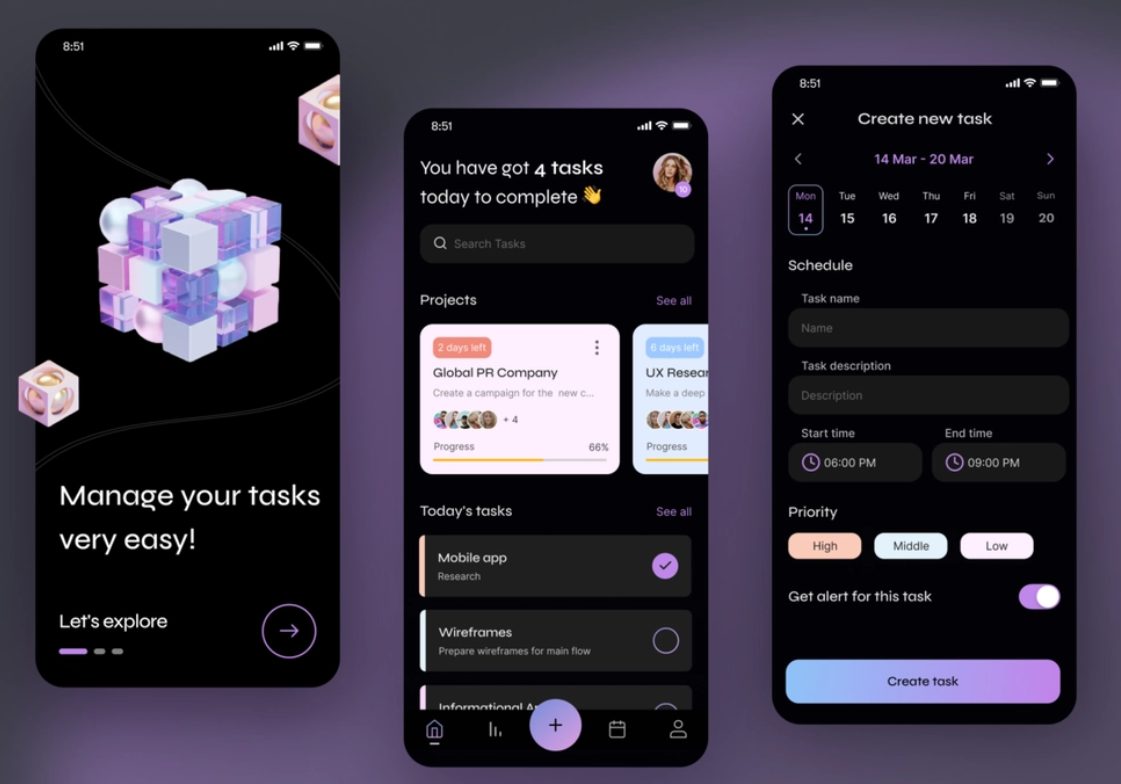For many of us, sound is an essential part of everyday living. Our day starts with a sound of alarm clock and ends with the subtle click of light switcher; sound is all around us during the day, we listen to our favorite music or receive vital information such as news reports on the radio as we drive to work.
But what about the digital products we use on a regular basis? When we describe apps and websites, we usually mean how they look, not how they sound. The design industry has always focussed more on the visual experience and less on the auditory experience. But audio can be just as important to the user experience as visuals. A proper implementation of sound can bring great value to the users, potentially making a more wholesome user experience beyond what we can see.
Sound can be a very powerful and useful tool when applied appropriately. There are a few instances when designing with audio is especially important.
1. Feedback
Traditionally audio is used as a feedback mechanism when users interact with devices. In the most basic form, it can be an audio feedback when the user pushes a button. This mechanism is used in many everyday devices, such as mobile phones, cars, toys, and gadgets.
When a user presses a number key on an iPhone dial pad, the phone will play a sound and show the number being pressed.
There is excellent potential for sound in designing for wearables and IoT devices. Many devices have limited or even no screen, and this makes sound the best option to provide feedback for users.
2. Notifications and Warnings
It’s difficult to dismiss sound when you hear it. Sound takes users out of their context and demands immediate attention. This property can be used when designing interfaces.
Outside of the digital world, a very good example would be the “ding” of microwaves that announces when the food is ready. In the digital world, we often hear “ding” when receiving a message.
Sound is used to help walk users through critical situations or even to avoid such situations altogether. It can be a good assistant when a user takes action. For example, a sound of a parking-assist feature can tell a driver that they are getting too close to an obstacle.
Or it might remind you to change your device when the battery is almost empty. When my phone runs low on battery, it politely reminds me to charge it.
Audio notifications are particularly useful when looking at the screen is not possible or not desirable. One typical example is a voice notifications in-car navigation system. They help focus user attention on what’s really important, driving.
Speaking of wearables, sound can be used not only as a feedback but also as a notification. For example, a fitness tracker can remind users to perform daily tasks or record their blood pressure. Such notifications are subtle audio reminders that can be essential in helping people achieve their fitness goals.
3. Branding
Audio can also be used for branding purposes, you can apply a unique sound and music to convey a brand’s essence. Companies like Apple and Microsoft have their own branding sound that helps us identify the brand just by listening to them.
Audio can also create a more personalized product for users, helping them to build an emotional connection with a product. One good example is Apple’s Siri — the system learns its user’s name and uses it in its replies, adding a personal connection to the interaction. Audio gives user a more human touch to the experience.
4. Personalization
Audio can also create a more personalized product for users, helping them to build an emotional connection with a product. One good example is Apple’s Siri — the system learns its user’s name and uses it in its replies, adding a personal connection to the interaction. Audio gives user a more human touch to the experience.
5. Accessible Interfaces
Accessible design is good design. Audio is a powerful tool for designing experiences for accessibility. In following cases designing with audio becomes a necessity, not just an afterthought: If elderly people represent a majority of your users. Audio feedback provides a vital form of confirmation for people who are used to hardware keyboards or not familiar with touchscreen technology; Audio is especially important for people who have poor eyesight and better perceive information at the hearing.
At the same time, audio should not be used as a sole identifier of instruction or action. Design teams should be familiar with WCAG2 guidelines and remember to consider assistive technology when building.
2 Things To Consider When Designing With Audio
Designing with audio brings up two important considerations: when to use sound and what kind of sound to choose?
ONLY USE SOUND WHEN IT HELPS
It’s difficult to advocate designing with audio without first understanding the problems that many users face when encountering sound on the web and in mobile apps. The problem of disruption and annoyance. Our world is already a noisy one, and when your app or website uses unnecessary sound effects it makes things even worse:
Unexpected sound or music is a primary negative outcome most users commonly associate with audio content. An unexpected introduction of sound not only disrupts but it can ruin the experience for users. Just imagine that you’re browsing websites while sitting on a train full of people and the website you visit starts playing loud music from device speakers. Most probably you’ll leave the site immediately.
Unwanted sound can be intrusive and annoying. If you remember the early 2000s you’re probably familiar with AOL’s email notification “You’ve got mail.” This notification is an excellent example of incredibly annoying audio.
Knowing how to present audio content the right way to users requires an intimate understanding of the target audience, their expectations, needs, and context in which they interact with a product.
CHOOSE THE RIGHT TYPE OF AUDIO
Not only is it important to find a case (or cases) where sound can enhance the user experience it’s also important to find a proper sound.
It’s critical that sound is designed in such a way that the user intuitively knows what it means. One good example can be found in Messages app for iOS. When users send a text message the sound that confirms sending clearly represent the action by suggesting movement away from the user.





















